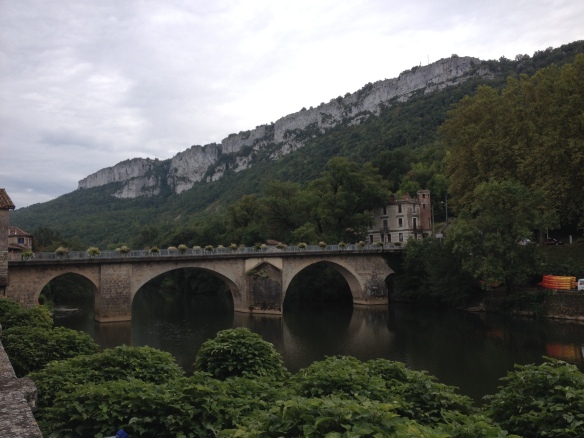I just fell in love with a new book: Flirting with French: How a Language Charmed Me, Seduced Me, and Nearly Broke My Heart by William Alexander (Algonquin US paperback 2014). People might raise an eyebrow when I say that a book about learning French is hilarious, but it really is text-your-friends-and-family-funny-quotes-from-the-book funny. I’m spreading the word with all of my friends in my Alliance Française classes. They’re going to love it.
William Alexander is a middle-aged American guy, who like so many of us, has a giant crush on France. He hopes to (finally) learn French, even though he is well aware that at age 57, he is on the downward slope of the cognitive and learning curve. He tells us his story with a light and snarky humility, laughing at himself so we can too. Over the course of a year, we follow Alexander as he blunders alongs on his learning challenge, only to find him facing an even greater health challenge. Through it all, Alexander’s love of France and his enthusiasm for accomplishing an elusive goal will charm and seduce you too.
So for my fellow Francophone-wannabes out there who are tormented by their own efforts to (finally) learn French, here are some delightful tidbits from the book.
“The French . . . always tangle up everything to that degree that when you start into a sentence you never know whether you are going to come out alive or not.” –Mark Twain
“Because it is female and lays eggs, a chicken is masculine.” –David Sedaris
” ‘Je suis a stranger here,’ I said in flawless French. ‘Je veux aller to le best hotel dans le town.’ ” –F. Scott Fitzgerald
Alexander has delightful three-page rant about the way the French count past sixty. Finally! Someone who shares my frustration! How many times have I tried to explain to my French teachers how silly it is that the number eighty in French is “four-twenty.” They say, “it’s just the number for eighty.” And I say, “No, it’s multiplication!” And then they look at me like I’m the crazy one. Not Alexander. He’s on our side.
And then. And then! A whole chapter on gendered nouns. Thank you! Here’s a fun list that demonstrates just how nonsensical the whole system is: a vagina and a woman’s breast are both masculine, while a beard, a screw and a necktie are all feminine. Hens are females, roosters male, and chickens (as David Sedaris knows well) are male. Alexander traces the history of gendered nouns, explaining how they came to be abandoned in the English language (the only one of the entire Indo-European family of languages to do so, believe it or not.) Apparently, we have the English peasants to thank: “Life was too short and too hard for a peasant to worry about how to address the bloody cow.”
I’ve always been curious about those Immersion French programs you read about in the back of French magazines, and Alexander actually went to one. He went for two intense weeks at Millefeuille Provence, a bain linguistic (linguistic bath) in southern France. His conclusion? “The immersion approach is assumed by everyone in the field to be the best way to learn a language, and it probably is, but there’s a fine line between immersion and drowning.” So maybe that’s not the panacea for our French language acquisition either!
Every French student will be able to relate to Alexander when he describes his self-consciousness speaking French to a Frenchman. As Alexander says:
The real problem for Americans and Brits, according to some linguists, is that the phonemes of French, with its rolled r’s and nasal intonations, sound so silly to us that when we pronounce them properly we feel like we’re doing an Inspector Clouseau parody, so we shy away from the correct pronunciation.
I know exactly what he means. I call it the “A-hole American Tourist” syndrome, when we come back to the States and try to keep using our hard-won French accents, calling Paris “Paree” and the croissants “cwahssahn” — until our friends and family all roll their eyeballs and beg us to stop. Pas plus!
But still, against the odds, despite the frustration, and in the face of linguists who insist it is just not possible (c’est impossible!) to become fluent in another language post-childhood, we keep learning and trying and practicing our French. And thanks to William Alexander, we are not alone. And we’re laughing along the way. Pas mal, pas mal.
Flirting With French: Highly recommended
For Further Reading: (Only kidding a little bit. Don’t know what I’d do without it.)
–The American Girls Club in Paris, by Margie White

















































You must be logged in to post a comment.